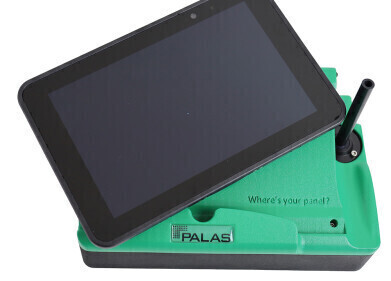Indoor air quality monitoring (IAQ)
6 Activities That Create Indoor Air Pollution
Aug 03 2021
Although it might not be the most pressing environmental concern on your mind, indoor air pollution is a serious problem which compromises the health of millions of people around the world. In fact, it’s estimated that poor indoor air quality is responsible for some 3.8 million deaths every year. As such, it’s an issue that deserves your attention and concern.
There is a wide variety of different pollutants which affect indoor air quality, some of which are produced from natural sources, some from anthropomorphic activities and some from materials and substances found around the home or workplace. Here’s a quick rundown of some of the most common activities which create indoor air pollution – and how to mitigate their harmful impact.
- Smoking. Tobacco products contain a potent cocktail of chemicals and toxins and their links with cancer and other respiratory ailments are well-documented. It’s unsurprising, then, that smoking indoors contributes deadly pollutants to the environment, especially if it’s an unventilated one.
- Cooking. When oil, butter or another lubricating substance is heated on a stove or in an oven, it can produce tiny particles of pollution invisible to the naked eye, known as particulate matter (PM). Meanwhile, gas cookers can emit contaminants such as carbon monoxide if their settings are not adjusted adequately.
- Painting. Home decoration is a popular method of turning a house into a home, but did you know that the paints, varnish and other products you use may have a deleterious effect on the quality of air? Minimise your exposure by choosing water-based products over oil-based ones and ventilating the space well during and after the paint job. The same goes for paint stripping.
- Cleaning. It’s important to maintain high levels of cleanliness to prevent the spread of bacteria and germs around the home. However, many detergents, disinfectants and other cleaning agents contain a variety of harmful pollutants that are released during use. It’s better to favour organic and natural products over synthetic or chemical ones to limit their effect.
- Washing. As well as keeping your house spick and span, personal hygiene is also conducive to good health – but certain cosmetics and other care products can release harmful pollutants into the atmosphere in your home. Again, opting for nature-based alternatives is the best course of action when keeping yourself hygienic and safe from harm.
- Heating. Do you use a wood-burning stove or fireplace to heat your home? If so, it’s likely that a large amount of contamination is being generated every time you switch it on – and that the pollutants will persist and accumulate over time if not addressed. Adequate ventilation is one method of dispersing the guilty parties.
Of course, not all of these activities will be applicable to every situation. In order to know how best you can alleviate the pollution in your home or workplace, it’s first necessary to know what kind of contaminants you’re dealing with. The full range of air quality monitoring products offered in our Buyers Guide can meet all your pollution detection needs, giving you the knowledge you need to overcome the issue.
Digital Edition
IET 35.2 March
April 2025
Air Monitoring - Probe Sampling in Hazardous Areas Under Extreme Conditions - New, Game-Changing Sensor for Methane Emissions - Blue Sky Thinking: a 50-year Retrospective on Technological Prog...
View all digital editions
Events
May 06 2025 Nuremberg, Germany
May 10 2025 Karachi, Pakistan
May 11 2025 Vienna, Austria
May 11 2025 Seoul, South Korea
Salon Analyse Industrielle & Instrumentation
May 14 2025 Paris, France












_(4427399123)-(2).jpg)






